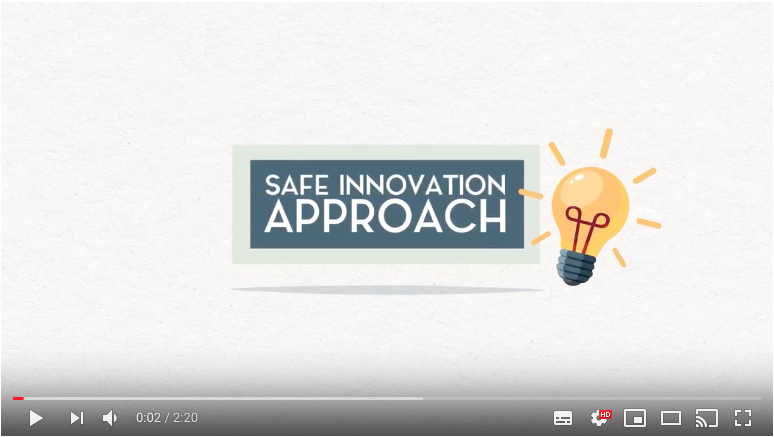Why do we need a Safe Innovation Approach (SIA) for nanomaterials?
The development, manufacture and use of nanomaterials (NMs) with novel properties and potentially novel risks are growing at a rapid pace. Although nanotechnology offers society economic and technological opportunities, technological innovations pose a challenge to governance of human and environmental safety due to the large difference in the pace between innovation and the development of suited governance. With the Safe Innovation Approach (SIA), under development within the EU project NanoReg2 (http://www.nanoreg2.eu), we seek to enhance the ability of all stakeholders to address the safety assessment of innovations in a robust yet flexible manner. SIA is an approach that combines the Safe-by-Design (SbD) and Regulatory Preparedness (RP) concepts. SbD stimulates the early consideration and integration of safety into the innovation process. The RP concept encompasses the development and application of a set of tools and procedures for regulators to prepare for innovations. SIA promotes a safe and responsible approach for industry when developing innovative products and materials, and stimulates a proactive attitude amongst policymakers and regulators to minimize the time gap between appearance and approval of innovation and appropriate legislation.
The Safe-by-Design Concept
The SbD concept aims at reducing uncertainties and risks of human and environmental safety of nanotechnology, starting as early as possible during the innovation process, on the basis of mandatory and voluntary safety and efficacy compliance requirements. (www.nanoreg.eu). Within the NanoReg2 project, SbD concept implementation was developed to include products, processes, consumers and workers health and environment protection.
Within the EU initiative NanoReg2, the SbD concept consists of three main pillars:
- Safe products (aiming to be non-hazardous for human and environment);
- Safe production (aiming to manage safety at the workplace and during processes); and
- Safe use and recycling (aiming to prevent releases during use of the product and to have efficient recycling routes).
This concept, applied to nanotechnology, aims at balancing safety and functionality in an integrated way, in order to improve innovation efficiency for the development of better nanotechnology products, considering all life cycle steps, and not only the product development phase. The properties of the NMs needed to make the materials useful for a specific application are determined in order to identify the possible SbD options. Such a concept maximises the use of resources and expedites the development of products containing NMs and new NMs that are SbD. The SbD approach should be based on the state-of-the-art of reliable and routine methods and tools, as well as best available knowledge and practices. In this respect, the development of in silico and in vitro testing methods, as well as understanding the modes or mechanisms of action for nano-induced toxicity (including adverse outcome pathways) are essential for the successful implementation of SIA.
The Regulatory Preparedness (RP) concept
The RP concept aims to improve anticipation of regulators in order that they can facilitate the development of adaptable (safety) regulation that can keep up with the pace of knowledge generation and innovation of NMs and nano-enabled products. In order to achieve this, regulators need to be prepared by being aware of new materials, technologies and innovations in the early stage of the innovation process. Information about the scientific state-of-the-art and about the innovations is needed in order to timely check on whether current regulations cover all aspects of innovation to ensure human and environmental safety. By engaging in dialogue with innovators, regulators can become aware of the latest advances in innovation and provide innovators with (informal) input on human and environmental safety of emerging technologies such as (novel) NMs and nano-enabled products.
